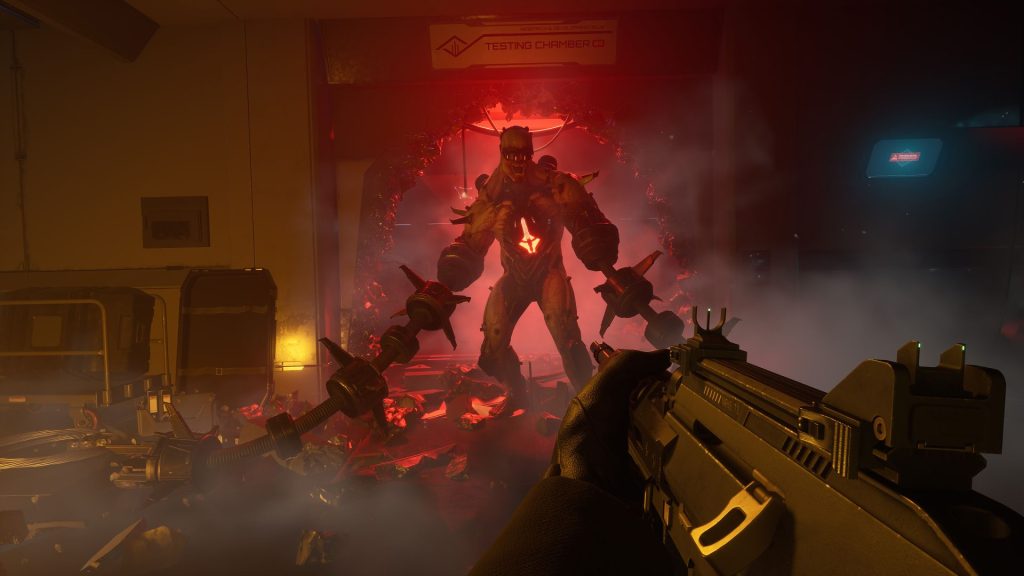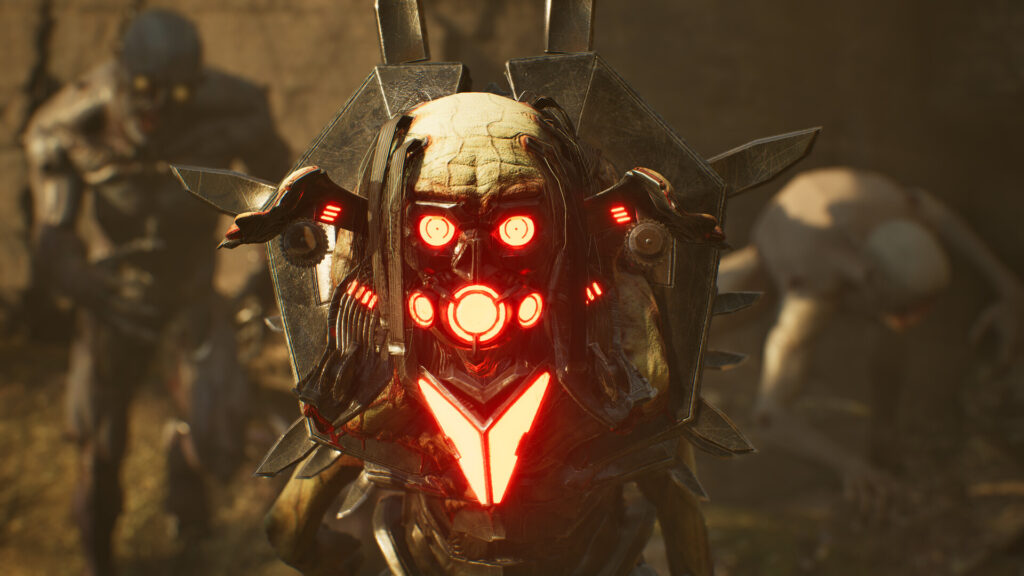Killing Floor 3 vs. Killing Floor 2: What’s New?

Despite the lacklustre response to Killing Floor 3’s closed beta earlier in the year, there’s still widespread hope this threequel in Tripwire Interactive’s much-loved horde slaying shooter series can be a worthy successor to Killing Floor 2. There’s certainly ambition in Tripwire’s efforts; if they pull this off, Killing Floor 3 will be the series’ bloodiest, most brutal, and strategically immersive experience yet. Here’s fifteen things we think distinguish Killing Floor 3 beyond its predecessor.
New game engine
We’re the best part of a decade out from Killing Floor 2’s original release date – a revered game which maintains an active player base – so to answer the question of why a third entry in the series is justifiable rests on the technology now available to developers Tripwire Interactive. Tech, which wasn’t available ten-years ago, is propelling Killing Floor towards its most detailed, visceral, immersive body horror potential. To achieve their vision, Tripwire are harnessing the technological bells and whistles of Unreal Engine 5 (for reference, Killing Floor 2 was constructed with Unreal Engine 3).
M.E.A.T. 2
An abbreviation of Massive Evisceration and Trauma, through Unreal Engine 5’s potential Killing Floor 3’s M.E.A.T. system is more potent and gory than was ever possible in Killing Floor 2. Viscera splurges out of walking Zed corpses thick and meatily; persistent blood – with enemies and weapons each harbouring unique ‘splatter maps’ – inner guts flinging from ripped flesh in ways bespoke to weaponry and enemy movement, with limbs severing at their precise entry wound. Each weapon and enemy has their own custom animations which are informed via the M.E.A.T. 2 system too.
Levels offer more verticality
Traversal in Killing Floor 3 has received a mini overhaul in that any environmental object or obstacle – so long as it’s at eye level – can be vaulted. Levels themselves have been designed with this verticality in mind, giving players much more freedom to evade enemies or reach higher areas. Vantage points impossible to reach in Killing Floor 2.
Enhanced movement
In addition to the mantling just discussed, Killing Floor 3 presents more movement options to mix up frenetic battling. Quick-dodges – triggerable via a single press of the sprint button – swiftly dash you out of danger or rapidly back in for a quick melee swing. Sprints into slides, ziplines, climbing, the aforementioned vaulting and mantling; these manoeuvres present new agility options for funneling hordes into choke points, or escaping an overwhelming scenario entirely.
Specialists replace Perks
One of Killing Floor 3’s biggest distinguishing factors over its predecessors is its absorption of Killing Floor 2’s Perks, replacing it with a Specialists System. This system won’t be unfamiliar to anyone who’s played adjacent games in the genre with Specialists functioning as archetypes akin to hero shooters which players can attune to their whim. Deep, multi-leveled customisation aims to offer some point of distinction for Killing Floor 3’s players to digest, as well as the ability for teams to include multiple of the same specialist should its players prefer. Each specialist comes loaded with special abilities and unique power moves too.
Branching skill trees
And on the note of multi-leveled customisation, Killing Floor 3 brings progression via branching skill trees rather than Killing Floor 2’s linear skill tracks. Remade from scratch, in fact, is Killing Floor 3’s multi-linear progression, with upgrade choices governing options to fine-tune combat style – from how weapons operate right through to a Specialist’s specific role within their team.
New armoury system
Expanding upon Killing Floor 2’s weapons modification systems is Killing Floor 3’s new Armoury System. Here, procedurally generated blueprints can be collected via traders dotted throughout the threequel’s maps which, when utilised with scavenged crafting materials, provide access to hundreds of accessories, including larger magazines and more powerful scopes, to mods which enhance weapon handling, such as reduced recoil.
Cosmetics expanded

Killing Floor 3 brings an expanded suite of cosmetics to affix to guns and personnel, including a wider variety of skins, costumes, trinkets, and apparel. Cosmetics will be unlocked through quarterly Supply Passes which includes a free version for all players and a paid premium version which offers extra rewards upon completion. Other in-game systems will offer cosmetics too between Supply Pass drops.
Faster levelling up
A common bugbear amongst Killing Floor 2 players was that character progression was too much of a grind. Well, whilst this isn’t a total overhaul Killing Floor 3 is set to offer levelling up at a much faster rate than its predecessor. The threequel’s story chugs along at a faster pace too.
Enemy AI
Those enhanced player movements we discussed earlier? Well, Killing Floor 3’s bioengineered Zed enemies have had their manoeuvrability tweaked too. Thanks to overhauled AI, they’re now faster and more unpredictable than they’ve ever been, with their designs appearing much more varied and terrifying than their previous guises too.
Zeds have weak points
A neat addition to Killing Floor 3’s revamped brand of bloody murder is that Zeds now have weak points which can now be exploited by players. What’s more, these weaknesses are generally in different spots depending on the enemy, so there’ll be layers of breakneck strategising in how best to wipe out hordes of powerful enemies. Note: ‘best’ here actually means most fun; or most creative, perhaps. Case in point: a Scrake’s chainsaw arm can be damaged, leading it to drop its chugging weapon whilst exposing a glowing weak point. Obliterate its glowing spot and the Scrake will be stunned. Then, maybe, it can be executed with its own chainsaw. Tripwire Interactive assure us there are numerous encounters just like this, discoverable by players skilled enough to exploit Zed weak points.
Other players can’t steal your weapons
In an effort to reduce trolling or, simply, unfair theft, when you die in Killing Floor 3 your weapon’s stash won’t be sitting waiting for another player to steal it into their own inventory. Instead, a map marker will highlight where your stash was dropped so you can head back to pick it up.
Dynamic objectives
Killing Floor 3 is ostensibly still a wave-based shooter, but the introduction of dynamic objectives offer extra satisfaction on top of all the visceral gut spilling. Beyond defending static points, teams can now divert some of their attention to hacking consoles, diverting reactor power, utilising points of control to trigger environmental traps, escort missions, and so on. These dynamic objectives emerge off the back of emergent threats such as power surges, acid leaks, or collapsing floors, ensuring each run is laced with unpredictability and, hopefully, replayability.
New team-wide Synergy Meter

Whilst Killing Floor 3 can still be played solo, co-operative play has received enhancements which reward true teamwork. Killing Floor 3 has introduced a team-wide Synergy Meter which is filled via combo takedowns and crossfire killing, with bonus wave modifiers unlocked as a result.
There is an enhanced pre-match hub
Included in Killing Floor 2 of course, Killing Floor 3 introduces an enhanced pre-match stronghold hub whereby players can tailor their loadouts much like before but with the addition of absorbing extra narrative content. Here is where players can choose to play with friends via crossplay too which, by the way, has been extended across PC and console users for the first time.











